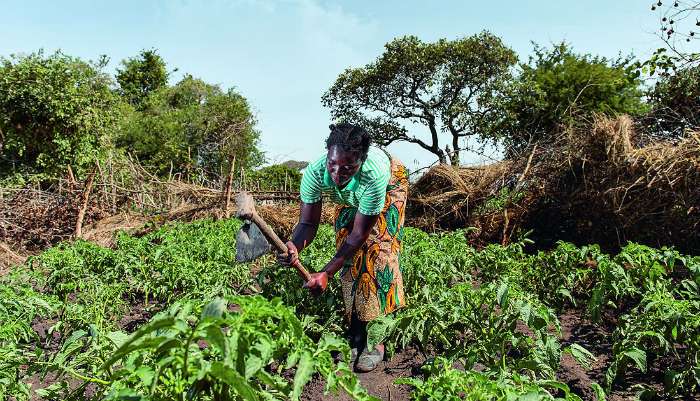How many greenhouse gases are released in Africa?

Researchers from Universidad Politécnica de Madrid (UPM) are involved in the first large collection and analysis of data on greenhouse gases emissions in African crop systems.
A researcher from the School of Agricultural, Food and Biosystems Engineering (ETSIAAB) at UPM was involved in an international scientific team that collected the existing data on greenhouse gases emissions (GHG) released in natural ecosystems and agricultural lands in Sub-Saharan Africa. Researchers also collected data of the factors causing these emissions and the management strategies, as well as possible solutions for their reduction. All collected data is available in an open access database hosted on a blog developed by the researchers in order to share the knowledge on GHG in the African continent.
In spite of the great relevance of Africa as an agricultural country and the vulnerability of its agro-ecosystem due to the climate change, very little is known about greenhouse gases emissions in Sub-Saharan Africa—for instance, the natural and anthropic factors responsible for these emissions and their contribution and mitigation potential to global emissions.
This work project carried out by an international group of researchers, including Professor Alberto Sanz Cobeña from ETSIAAB, has collected the existing information so far on greenhouse gases emissions released in natural ecosystems and agricultural lands in Sub-Saharan Africa. After reviewing all available scientific literature on the subject, 75 research projects carried out in 22 African countries were studied in detail in order to determine the factors that cause these emissions, the management strategies as well as their possible reduction.
After analyzing the study results, researchers observed that the main contributor to the total emissions in Africa is carbon dioxide, followed by methane and nitrous oxide. In the first case, the major emissions rates are released when land usage changes, this is very common in slash-and-burn agriculture. Methane emissions usually occur in crops of deepwater rice and in African landscape elements such as termite mounds.
Nitrous oxide, as it usually occurs in crop systems, is defined by management practices linked to the nitrogen fertilization, mainly the use of manure. In short, the type of vegetation, management of forest areas and changes in land use are the main factors that cause GHG in natural ecosystems in Sub-Saharan Africa.
In agricultural systems, the adding of crop residues and the use of manures and synthetic fertilizers cause significant emission flows. However, there are great changes on these systems in the magnitude of the emission depending on the gas in question and the management practices. In this way, improving the fallow in the presence of legumes can lead to an increase in carbon dioxide and nitrous oxide emissions compared to the traditional crops.
The type and quality of crop residues are key factors to control the emissions of these gases. Likewise, the intensity of the carbon dioxide emissions (emissions per kilogram of crop) was minimal with doses of fertilizer between 100 and 150 kilograms per hectare.
The study results suggest that natural ecosystems and agricultural lands in sub-Saharan Africa can be a significant source of emissions worldwide. Additional measures of GHG emissions are required in order to reduce the existing uncertainty about estimated annual emissions associated with different uses of land as well as the potential effectiveness of potential mitigation strategies.
Alberto Sanz Cobeña, the UPM researcher involved in this project says, "Africa is a vast continent with many different types and uses of land, agricultural practices, etc. In order to achieve robust conclusions about the role of Africa as a contributor of global GHG, it is necessary a greater international collaboration at scientific, academic and socioeconomic levels."
More information: Dong-Gill Kim et al. Greenhouse gas emissions from natural ecosystems and agricultural lands in sub-Saharan Africa: synthesis of available data and suggestions for further research, Biogeosciences (2016). DOI: 10.5194/bg-13-4789-2016
Journal information: Biogeosciences
Provided by Universidad Politécnica de Madrid



















